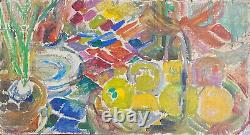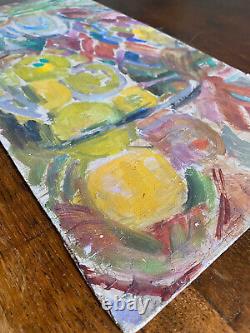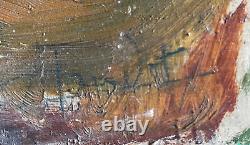
- Home
- Artist
- André Poirson (4)
- Anonymous (5)
- Bouquier (3)
- Claude Revardeau (2)
- Clery Pierpont (2)
- Contemporary (5)
- Courtine (2)
- Felicia Butel (2)
- Henri Royet (2)
- Illegible (2)
- Jean-paul Ulysse (6)
- Maurice Barle (3)
- Maurice Bismuth (2)
- Pierre Jaillet (2)
- Renoir (3)
- René Lévy (2)
- Siarnowski (2)
- Unknown (3)
- Unsigned (4)
- Werner Gilles (2)
- Other (4977)
- Authenticity
- Characteristics
- Boxed (2)
- Framed (25)
- Framed, On Canvas (11)
- Framed, On Panel (2)
- Framed, On Wood (38)
- Framed, Signed (4)
- Miniature (3)
- On Canvas (8)
- On Panel (28)
- On Wood (130)
- On Wood, On Canvas (6)
- On Wood, On Panel (15)
- On Wood, Signed (3)
- Signed (14)
- Signed, On Canvas (15)
- Signed, On Panel (10)
- Signed, On Wood (58)
- Other (4663)
- Theme
- Abstract (7)
- Animals (28)
- Architecture (8)
- Character (64)
- Child (5)
- Flower, Tree (15)
- Genre Scene (39)
- History, War (5)
- Horse Portrait. (2)
- Hunting, Fishing (5)
- Landscape (318)
- Landscape Riverbank (2)
- Marine (3)
- Marine Landscape (2)
- Nude (2)
- Nude Woman (2)
- Portrait (9)
- Religion, Mythology (23)
- Seascape, Boat (53)
- Still Life (50)
- Other (4393)
- Type
- Weight
Tableau HSP Still life with fruits by André CLAUDOT (1892-1982)









Through my Filigrane Antiquity store, I am pleased to offer you a gallery of ancient and authentic works and objects (no copies, fake, or reprints) at truly affordable prices. I pay particular attention to my descriptions: you bid on what you see.
Oil painting on wood panel representing a still life with fruits signed in pencil with the name written on the back of the work. In the vein of the artist's cubist inspirations, this work is in good condition except for a crack in the wood that slightly distorts the panel on the left edge (possible to restore) - please look at the photos, which are contractual. For your information, this work comes from a very beautiful collection of regionalist painters and local minor masters.
Panel dimensions: 24 / 45.5 cm. Feel free to contact me directly for any additional questions or to send photos.
It is possible to view the work and pick it up at home. Born on February 14, 1892 in Dijon (Côte-d'Or), died on June 13, 1982 in Loeilley (Haute-Saône); draftsman, painter in Paris, China, Paris, and Dijon; anticlerical, anarchist, socialist, then member of the French Communist Party.
His father, François Claudot, came from a family of luthiers from Mirecourt, took him to meetings of the Free Thought movement and read. André Claudot studied at the Carnot high school in Dijon, which he left in 1905 to enter the Dijon School of Fine Arts.In 1909, he moved to Paris where he lived while working for a company that made theater sets in Belleville, as well as at Les Halles and on the docks. After the flooding of Paris in 1910, he even lived on the street with the homeless. During this time, he became friends with anarchist militants and returned to Dijon in 1912, where he was active in anarchist circles. He was mobilized in 1914 and continued to draw (clandestinely) for extreme left-wing newspapers.
He finished the war in the Balkans. Demobilized in August 1919, he returned to Dijon, where he married Suzanne Verriest. An exhibition of his war drawings was organized in 1922 in Dijon.
He also mentioned having given sketchbooks (400 drawings) to an anarchist group in Saint-Étienne after the war. In 1920, André Claudot moved back to Paris and exhibited in Parisian and Burgundian salons (Salons des Indépendants, Salon d'Automne, Salon de l'Essor in Dijon), at the Salon de l'Automobile in 1924 (as a decorator), and at the Exposition des Arts Décoratifs in Paris in 1925.He was also a member of the Clergé Group (founded by the painter Auguste Clergé) of artists in Montparnasse. In 1926, his friend the painter Marcel Bach offered him to share exhibition space at the gallery. At 151 Bd Haussmann where he exhibited his paintings of "the zone" and Les Halles.
One of his works was appreciated and purchased by the sculptor Antoine Bourdelle, which increased his recognition. At that time, he could also count on the support of François Pompon, who like him was a member of the literary and artistic association L'Essor Bourguignon, in which his friend Émile Rondinet and the future socialist mayor of the city, Robert Jardiller, also participated. In September 1926, buoyed by Bourdelle's appreciation and Pompon's support, according to his testimony, he left for China, at the urging of his friend the Chinese painter Lin Fengmian (Lin Fong-mien), and became a professor for a year at the National Institute of Arts in Beijing, where he was also friends with the painter Qi Baishi (Tsi-Pai Che). He was in contact with communist students or sympathizers, protested vehemently against the coup d'état of Zhang Zuolin, which led to the execution of several of his students.
Officially criticized for his teaching (study of the nude, painting in the street, use of oil paint), the school faced financial problems related to these events, and Claudot's contract in Beijing was terminated. After the liberation of Beijing by the Kuomintang in 1928, he taught at the Hangzhou Institute of Arts, founded in part by Lin Fengmian, who had brought him to the region. He played an important role in cooperation between French and Chinese artists, in connection with international revolutionary networks. Back in Paris in 1930, he moved to La Ruche, then in 1932 to the Cité des Artistes de Montmartre, which had just opened. These years were difficult, as evidenced by his unemployment cards in 1932, 1933, and 1934.
Upon his return from China, he continued to exhibit in Parisian salons (Salons d'Automne, Salons des Indépendants, Salon de la Société des Artistes Français in 1933, Salon des Artistes Anciens Combattants in 1934) until his return to Burgundy. André Claudot joined freemasonry and belonged to the lodge Travail et Vrais Amis Fidèles. Under the impetus of his friend Émile Rondinet, and with the arrival of Robert Jardiller as mayor, he definitively returned to Dijon as a professor at the School of Fine Arts at the end of winter or the beginning of spring 1935.He later painted works denouncing the massacres committed by Franco. In 1954, he created an association in his studio on rue Musette in Dijon, which became a painting school: "l'Atelier." He exhibited with his students from 1954, and from the sixties, in the annexes of the Dijon City Hall. From 1979, widowed after living with his wife Suzanne for over 60 years, suffering, he died on June 13, 1982.
His paintings sold for five-figure prices, 36,000 euros being one of the best sales in France. The shipping price includes the cost of shipping as well as the cost of supplies necessary to protect the work. Subscribing to a delivery insurance policy is the only recourse in case of loss, theft, or damage during shipping. The choice and responsibility remain yours.Thank you in advance for your trust.

